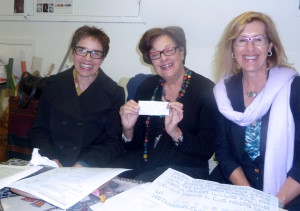Lisa asked: I finished my first row and realized that the margin at the left side is wider than the margin at right side. Since I counted carefully, I’m assuming I may have turned the fabric the wrong direction. Is it possible to cut off and finish that seam? I also noticed that there are several inches extra at the bottom of the fabric. Can it be adjusted when pieced together?
Would it help to have the top and bottom marked on the fabric before the kits are sent out?
A: The first row is the most difficult, and hopefully stitching will flow more easily after this.
Yes, there is some extra space at the left side and there may be some at the bottom depending how long your portion is. The canvas is cut as a square to accommodate 13 lines of text, which is the longest portion I gauged. Your “extra” bottom space is for your creative treatment, if you decide to do that. But note that there is a precise “picture plane” boundary, indicated by the orange dashed line on your template.
Although your suggestion of marking the 4 corners is a good one, I really couldn’t do that with complete precision on unstitched aida cloth that is subject to the vagaries of humidity and tension. That is the reason why positioning the first line accurately is so crucial.
Don’t cut away any “extra” cloth. We’ll deal with it at the assembly stage.


